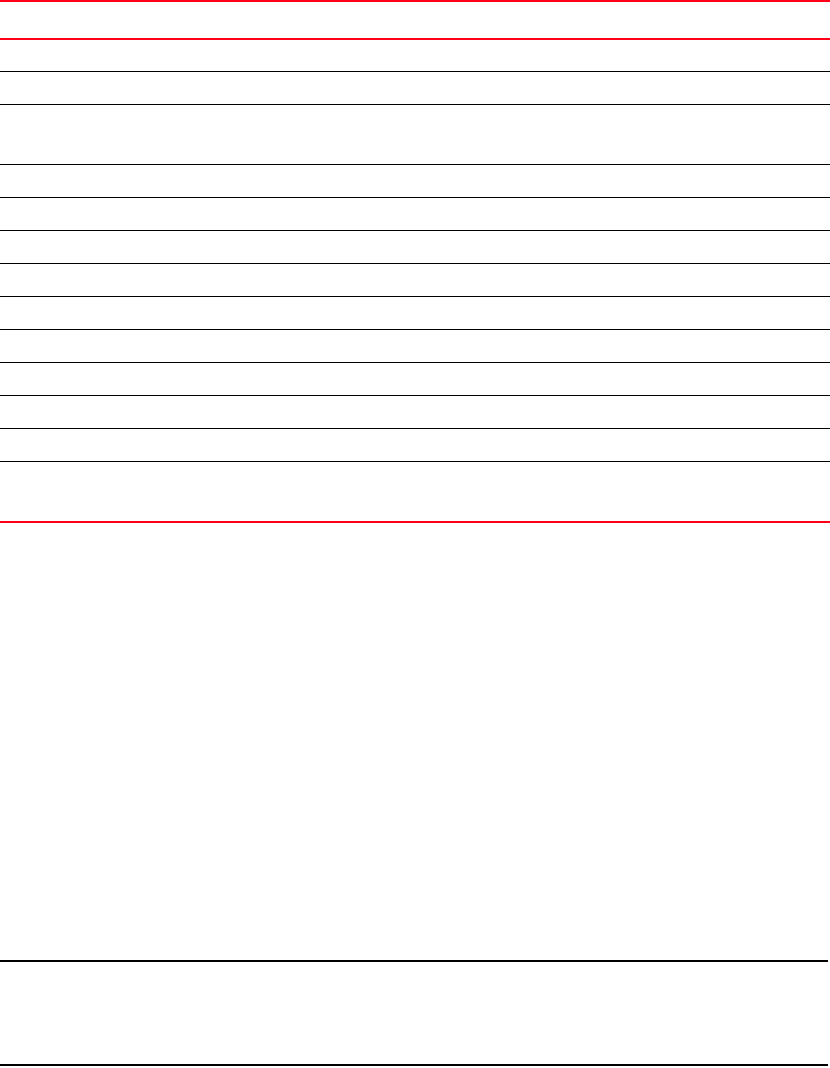Home Theater Server User Manual
Table Of Contents
- Contents
- About This Document
- Network Security
- TCP SYN attacks
- IP TCP syn-proxy
- Granular application of syn-proxy feature
- Syn-def
- No response to non-SYN first packet of a TCP flow
- Prioritizing management traffic
- Peak BP utilization with TRAP
- Transaction Rate Limit (TRL)
- Understanding transaction rate limit
- Configuring transaction rate limit
- Configuring the maximum number of rules
- Saving a TRL configuration
- Transaction rate limit command reference
- Global TRL
- TRL plus security ACL-ID
- security acl-id
- Transaction rate limit hold-down value
- Displaying TRL rules statistics
- Displaying TRL rules in a policy
- Displaying IP address with held down traffic
- Refusing new connections from a specified IP address
- HTTP TRL
- Overview of HTTP TRL
- Configuring HTTP TRL
- Displaying HTTP TRL
- Display all HTTP TRL policies
- Display HTTP TRL policy from index
- Display HTTP TRL policy client
- Display HTTP TRL policy starting from index
- Display HTTP TRL policy matching a regular expression
- Display HTTP TRL policy client index (MP)
- Display HTTP TRL policy client index (BP)
- Display HTTP TRL policy for all client entries (BP)
- Downloading an HTTP TRL policy through TFTP
- HTTP TRL policy commands
- Logging for DoS Attacks
- Maximum connections
- clear statistics dos-attack
- Maximum concurrent connection limit per client
- Firewall load balancing enhancements
- Syn-cookie threshhold trap
- Service port attack protection in hardware
- Traffic segmentation
- DNS attack protection
- Access Control List
- How ServerIron processes ACLs
- Default ACL action
- Types of IP ACLs
- ACL IDs and entries
- ACL entries and the Layer 4 CAM
- Configuring numbered and named ACLs
- Modifying ACLs
- Displaying a list of ACL entries
- Applying an ACLs to interfaces
- ACL logging
- Dropping all fragments that exactly match a flow-based ACL
- Enabling ACL filtering of fragmented packets
- Enabling hardware filtering for packets denied by flow-based ACLs
- Enabling strict TCP or UDP mode for flow-based ACLs
- ACLs and ICMP
- Using ACLs and NAT on the same interface (flow-based ACLs)
- Displaying ACL bindings
- Troubleshooting rule-based ACLs
- IPv6 Access Control Lists
- Network Address Translation
- Syn-Proxy and DoS Protection
- Understanding Syn-Proxy
- Configuring Syn-Proxy
- DDoS protection
- Configuring a security filter
- Configuring a Generic Rule
- Configuring a rule for common attack types
- Configuring a rule for ip-option attack types
- Configuring a rule for icmp-type options
- Configuring a rule for IPv6 ICMP types
- Configuring a rule for IPv6 ext header types
- Binding the filter to an interface
- Clearing DOS attack statistics
- Clearing all DDOS Filter & Attack Counters
- Logging for DoS attacks
- Displaying security filter statistics
- Address-sweep and port-scan logging
- Secure Socket Layer (SSL) Acceleration
- SSL overview
- SSL acceleration on the ServerIron ADX
- Configuring SSL on a ServerIron ADX
- Basic SSL profile configuration
- Advanced SSL profile configuration
- Configuring Real and Virtual Servers for SSL Termination and Proxy Mode
- Configuration Examples for SSL Termination and Proxy Modes
- SSL debug and troubleshooting commands
- Displaying socket information

82 ServerIron ADX Security Guide
53-1002440-03
Using ACLs and NAT on the same interface (flow-based ACLs)
2
Using ACLs and NAT on the same interface (flow-based ACLs)
You can use ACLs and NAT on the same interface, as long as you follow these guidelines:
• You must use the ip strict-acl-tcp command when configuring ACLs and NAT is configured on
the same Layer 2 Switch. (Refer to the instructions below on how to use this command.)
• Do not enable NAT on an interface until you have applied ACLs (as described below) to the
interface. If NAT is already enabled, you must disable it, apply the ACLs, then re-enable NAT on
the interface.
• Enable the strict TCP mode.
• On the inside NAT interface (the one connected to the private addresses), apply inbound ACLs
that permit TCP, UDP, and ICMP traf fic to enter the device from the private sub-net.
You can use a standard ACL to permit all traffic (including TCP, UDP, a nd ICMP traffic) or an
extended ACL with separate entries to explicitly permit TCP, UDP, and ICMP traf fic.
NOTE
You do not need to apply ACLs to permit TCP, UDP, and ICMP traffic unless you are applying other
ACLs to the interface as well. If you do not plan to apply any ACLs to a NAT interface, then you do not
need to apply the ACLs to permit TCP, UDP, and ICMP traffic.
Here is an example of how to configure device to use ACLs and NAT on the same interfaces. In this
example, the inside NAT interface is port 1/1 and the outside NAT interface is port 2/2.
The following commands enable the strict TCP mode and configure an ACL to permit all traffic from
the 10.10.200.x sub-net. A second ACL denies traffic from a specific host on the Internet.
protocol-unreachable 3 2
reassembly-timeout 11 1
redirect
NOTE: This includes all redirects.
5x
router-advertisement 9 0
router-solicitation 10 0
source-host-isolated 3 8
source-quench 4 0
source-route-failed 3 5
time-exceeded 11 x
timestamp-reply 14 0
timestamp-request 13 0
ttl-exceeded 11 0
unreachable
NOTE: This includes all unreachable messages
3x
TABLE 5 ICMP message types and codes
ICMP message type Type Code










